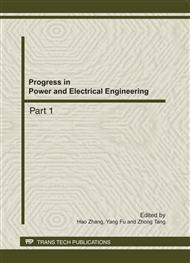p.789
p.794
p.798
p.802
p.807
p.811
p.819
p.828
p.835
The Performance Improvements of a Ground-Coupled Heat Pump System for both Building Heating and Cooling Modes
Abstract:
The objective of the paper is to describe the performance of ground-coupled heat pump (GCHP) system in 20 years. A mathematical model for simulation of GCHP system is built based on long time-step Eskilson’s theory. The design methodology is based on a simulation that predicts the temperature response of the ground heat exchanger (GHE) to monthly heating and cooling loads and monthly peak heating and cooling demands over a number of years. The temperature response also has a secondary impact on the predicted energy consumption of the system, as the coefficient of performance (COP) of the heat pump varies with entering fluid temperature. This paper presents GCHP system can achieve better energy performance in building that heating and cooling loads are balanced all the year round. It is illustrated by performing a GHE for a 300 m2 building located in Changchun, China.
Info:
Periodical:
Pages:
807-810
Citation:
Online since:
October 2011
Authors:
Price:
Сopyright:
© 2012 Trans Tech Publications Ltd. All Rights Reserved
Share:
Citation:


